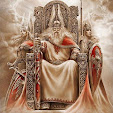Why is chess considered a sport?, sometimes we have the tendency to consider sport only what destroys us physically. I have been a competitor in many sports: athletics, swimming, handball and I have done others such as full contact, basketball, etc...and, indeed, I was much more tired than playing chess. But that is not the criterion to determine whether an activity is sports or not, or at least it is not the only one. The International Olympic Committee and more than 100 countries recognize chess as a sport. In addition, he tried his foray into the Olympics in 2020 in Tokyo (and did not succeed), although he did participate as an exhibition sport in Sydney 2000.
Here are the reasons why chess is a sport:
1. IT IS COMPETITIVE: the goal is to win. Chess involves a relentless fight against an opponent. There is probably no sporting activity in which two people engage in a competitive fight of such intensity for such a sustained period of time. If in chess you lose concentration and make a mistake, you lose the game, something that does not happen in many other sports, which implies a permanent state of alert and great psychological and physical exhaustion.
2. IT HAS A STRUCTURE: the world championship has been organized since 1886 and continues to have a great tradition. Chess competitions are organized at all levels: schools, universities, cities, leagues, junior, senior, European, world, etc. In Spain, for example, there are about 30000 federated: a number close to that of people federated in Rugby.
3. PHYSICAL APTITUDE: maximum mental condition requires being in good physical condition. Players must concentrate fully for many hours and for many days in official tournaments. As stress increases, blood pressure, pulse, and respiration rates increase. Competitors for the worls championships have nutritionists and physical trainers. Anyone who has played and official 8 or 9 day tournament will know very well what it affects physically.
4. CODE OF BEHAVIOR PLAYER are penalized for lack of sportsmanship, for example, for refusing to shake their opponent's hand. Mobile phones are prohibited. There is an anti-doping policy. And the rules of chess are complex and rigorous.
5. OLYMPIC RECOGNITION: Chess has been recognized as a sport by the International Olympic Committee since 2000. It was one of the events at the Asian Games in 2006 in Doha and again in Guangzhou in 2010. It is also being considered for inclusion in the Pan American Games. Russia is trying to incorporate chess into the Winter Olympics.
6. EUROPEAN RECOGNITION: Chess is recognized as a sport in 24 of the 28 member states of the European Union. The exceptions are the United Kingdom, Ireland, Belgium and Sweden. In Sweden, chess is likely to be included soon. The support comes from the Swedish sports coaches organization that admires the metal discipline of chess.
7. GLOBAL PLAY CHESS is played all over the world regardless of age, race, gender, income or language. People with physical disabilities play chess. Blind people play chess. People with advanced psychological illnesses play chess: Professor Stephen Hawking played chess with his children.
8. MENTAL COMPONENT: all sports have a mental component. In short, competitive sports can be interpreted as strategy games that differ only in their physical manifestation.
9. PLAYER RANKING SYSTEM: the player classification system was developed for chess in 1960 (the ELO system) and has been adopted by many other sports, including American football, baseball, basketball, hockey, rugby and golf. It is a very reliable system to measure the level of the players.
In conclusion, chess is a sport that is accepted in many countries and whose practice seriously causes great physical and mental wear.


















































